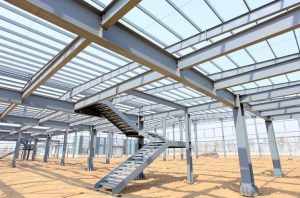
Metal fabrication is an often overlooked but incredibly valuable contemporary industry practice. When facing seemingly impossible design challenges, metal fabrication may uncover a sustainable manufacturing solution that aligns with stringent specifications – by transforming raw metal into precision parts solving the posed challenge anywhere in the world. From engineered components to withstand challenging environments, to design performances and tests where lightweight but demanding endure exactingly, obviously no manufacturing process can contribute to engineered creativity like professional metal fabrication. Metal fabrication is not only highly functional and versatile, it can support new levels of creative engineering functional engagement. At Al Afnan Metals, we have supported on today’s advanced metal fabrication techniques highly challenging specifications to working reality, alleviating time and labor of challenging overcoming you may have thought impossible.
Structural steel fabrication is taking raw steel materials and fabricating them into finished components that are ready for a construction project. The fabrication process is really an involved process, with several different steps or activities, and each step involves precision and a high attention to detail in order to comply with the standards of the industry.
Structural steel fabrication shops today are using sophisticated technology such as CNC machines, robotic welders, and 3D modeling software that increases quality in the fabrication process, improves efficiency, and enhances cost control throughout the project.
The reason why structural steel fabrication is so prevalent in construction projects throughout the globe is the many advantages that you will need to understand when considering a construction project.
Structural steel fabrication creates an entire framework that is designed to have a high strength-to-weight ratio. Steel components can withstand extreme loads, seismic forces, and harsh elements to serve a purpose for many decades with long term stability and durability.
Time savings is one of the biggest advantages of structural steel fabrication. Unlike concrete building components, which have a relatively long curing time, prefabricated steel components can be pre-manufactured while the foundation work is being done on site; this requires some significant construction advantages:
The first material cost of steel can be higher than other options. However, the fabrication of structural steel entails real cost savings in the long run:
Structural steel fabrication gives architects and engineers considerable freedom to explore in their designs. The use of structural steel allows for:
The construction industry is increasingly focused on sustainable solutions, and structural steel fabrication provides sustainability:
Due to the versatility of structural steel fabrication, it has become indispensable in many sectors and types of construction. As the technologies continue to advance and architects expand the range of possibilities for structural steel fabrication the level of application will continue to grow.
The skeleton of many commercial buildings is fabricated structural steel. This includes:
Mixed-Use Developments: The strength of steel allows for complex, multi-purpose structures.
The industrial sector uses a lot of structural steel fabrication for facilities including:
Processing Facilities: Corrosion-resistant steel construction can function well in corrosive and challenging conditions.
Some of the best examples of structural steel fabrication can be found in infrastructure:
Telecommunications Towers: Steel systems, with its strength, allows for very tall structures that can endure wind loads.
Structural steel fabrication is also becoming more popular through residential construction:
Retrofitting Projects: Existing structures can be strengthened with structural steel during renovations.
Determining which structural steel fabrication company is the right one to partner with for your project is a critically important step in the project’s success. The experienced contractor of the fabrication place directly influences the overall success of a construction project, including the schedule, budget and ultimately the safety and performance of the structure as designed.
Here are some key considerations to take into account when looking at structural steel fabrication companies including Al Afnan Metals and similar.
Specialization – while most will be capable of a wider range of projects, some will shine above the rest in specific areas (industrial buildings, bridges, towers, etc.)
Quality Policy and Management Systems – an industry standard certification, such as ISO basically indicates a commitment to quality and a framework for quality to be achieved.
In-house Services – if a company offers a comprehensive/collaborative service, they will likely have a certain pride in those services and continue to improve them, vs. offering a number of services that are outsourced, that just may deliver similar results, but with much less value to have outsourced/receptive projects of quality.
Digital Integration – The ability to use BIM (Building Information Modeling) and other digital technology.
Corrective Action: Established procedures for dealing with non-conformance.
Industry Reputation: Know what others in the industry are saying about the contractors standing in the construction community.
Be cautious with structural steel fabricators:
Structural steel fabrication is perhaps the perfect combination of engineered precision and construction practicality. From its outstanding strength and speed of construction, to being a highly sustainable building material with design flexibility, structural steel fabrication is becoming a go-to option for emerging construction projects. The demands of building design and evolving construction timelines place an even greater emphasis on qualified expertise in structural steel fabrication.
In projects where quality, precision and reliability matter a qualified structural steel fabricator like Al Afnan Metals is key; their professional team utilizes current technology which is still rooted in traditional factory processes to achieve superior fabricated structural steel products that last.
Want your next construction project to have the added value of a quality structural fabrication? Visit Al Afnan Metals for additional information on their structural steel fabrication products and request a consult to review your specific project requirements. Their friendly and helpful customer service will work with you to make your architectural site vision a reality.
This article was written by Al Afnan Metals, leaders in quality fabrication and industrial supply. Al Afnan Metals is passionate about the quality of products they manufacture, delivering quality and customer satisfaction.